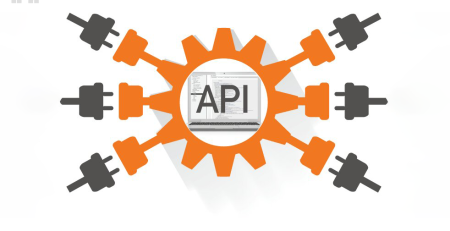Why Small Software Teams Win?
A clear trend has evolved in the dynamic world of software development: tiny software teams are taking the lead and succeeding spectacularly. These small, agile teams’ benefits are more obvious, changing how projects are addressed and results are produced. A variety of variables that particularly situate small software teams for success are driving this change. These teams are rewriting the history of achievements in software development through simplified communication, effective cooperation, and quick flexibility. This investigation dives into the compelling factors that led to the success of small software teams and reveals the tactics that enable them to stand out in a constantly changing environment.
Communication and Collaboration
Communication and collaboration are crucial aspects of any successful software development team, and they are often even more pronounced in small teams. Here’s why these elements are so important:
- Shared Understanding: Effective communication ensures that all team members have a clear and shared understanding of the project’s goals, requirements, and challenges. This shared understanding prevents misunderstandings and helps align everyone towards a common objective.
- Problem Solving: Collaboration allows team members to pool their knowledge and expertise to solve complex problems. When team members work together, they can come up with innovative solutions that might not have been possible individually.
- Feedback Loop: Frequent communication and collaboration enable a continuous feedback loop. This means that issues can be identified and addressed early, leading to higher-quality software and faster development cycles.
- Reduced Silos: In small teams, it’s easier to break down silos and encourage cross-functional collaboration. Developers, designers, testers, and other roles can work closely together, leading to a more holistic and integrated approach to development.
- Knowledge Sharing: Collaboration encourages the sharing of knowledge and best practices. When team members learn from each other, it leads to skills improvement across the entire team.
- Adaptability: Effective communication allows the team to adapt quickly to changes. If new requirements or challenges arise, the team can discuss and decide on the best course of action without delays.
- Decision-Making: Collaboration ensures that decisions are made collectively, leveraging the insights of all team members. This often results in well-informed and more well-rounded decisions.
- Trust and Cohesion: Regular interaction and collaboration foster a sense of trust and cohesion within the team. This is particularly important in small teams where everyone’s contributions are significant.
- Preventing Bottlenecks: When team members communicate openly, it’s easier to identify bottlenecks and areas where help is needed. This prevents work from getting stuck due to lack of information or support.
- Personal Growth: Communication and collaboration provide opportunities for personal and professional growth. Team members can learn new skills, gain exposure to different aspects of the project, and improve their communication abilities.
- Client or User Alignment: Communicating with clients or users helps ensure that the software being developed meets their needs and expectations. In small teams, direct communication with stakeholders is often more manageable and can lead to a more tailored solution.
To enhance communication and collaboration in small software teams, consider the following practices:
- Regular Meetings: Hold regular stand-up meetings, retrospectives, and planning sessions to keep the team aligned and informed.
- Use Collaboration Tools: Utilize tools like project management software, version control systems, and communication platforms to facilitate teamwork.
- Open Communication Channels: Encourage open and honest communication. Create an environment where team members feel comfortable sharing their thoughts, concerns, and ideas.
- Cross-Functional Teams: Form cross-functional teams that include members with diverse skill sets. This fosters collaboration across different disciplines.
- Clear Documentation: Document decisions, requirements, and processes to ensure that everyone has access to important information.
- Feedback Culture: Promote a culture of giving and receiving feedback constructively. This helps improve both individual and team performance.
Ultimately, a combination of effective communication and collaborative teamwork can contribute significantly to the success of small software teams by maximizing efficiency, quality, and innovation.
Agility
Agility in the context of software development refers to the ability of a team or organization to quickly and effectively respond to change, deliver valuable software, and adapt to evolving requirements and market conditions. Agile methodologies are designed to promote flexibility, collaboration, and customer-centricity. Here’s why agility is important for software teams:
- Rapid Response to Change: The software industry is dynamic, and requirements can change rapidly. Agile methodologies emphasize embracing change rather than resisting it. Agile teams can adjust their plans, priorities, and strategies in response to new information, without causing significant disruptions.
- Continuous Delivery of Value: Agile encourages teams to deliver small, incremental improvements to the software product at regular intervals. This approach allows stakeholders to see progress and provides opportunities to gather feedback and make adjustments early in the development process.
- Customer-Centric Approach: Agile methodologies prioritize customer needs and feedback. By involving customers and users throughout development, teams can ensure that the software aligns with real-world requirements and provides the most value.
- Iterative Development: Agile practices, such as Scrum and Kanban, promote iterative development cycles. This means that the software is developed in short iterations, with each iteration building on the previous one. This approach enables teams to deliver functional software quickly and frequently.
- Collaborative Teams: Agile emphasizes collaboration among team members and stakeholders. Cross-functional teams work together closely, leading to improved communication, knowledge sharing, and problem-solving.
- Adaptive Planning: Agile methodologies promote adaptive planning, which means that plans are not set in stone. Teams continuously reassess priorities and adjust plans based on new information and changing circumstances.
- Reduced Risk: By delivering smaller increments of functionality regularly, agile teams reduce the risk of large-scale failures. Any issues that arise can be addressed quickly, minimizing the impact on the overall project.
- Empowered Team Members: Agile teams are often self-organizing and empowered to make decisions. This fosters a sense of ownership, accountability, and motivation among team members.
- Frequent Feedback: Agile methodologies encourage regular feedback loops with stakeholders. This helps identify issues early and ensures that the software being developed meets expectations.
- Quality Focus: Agile practices often include automated testing and continuous integration, leading to a higher level of software quality. Frequent testing and integration catch defects early in the development process.
- Transparency: Agile methodologies promote transparency in all aspects of development. Progress, challenges, and decisions are visible to all team members and stakeholders, fostering trust and alignment.
- Short Time-to-Market: Agile’s incremental approach enables teams to release functional software quickly. This can lead to faster time-to-market and a competitive advantage.
Agile methodologies come in various flavors, such as Scrum, Kanban, Extreme Programming (XP), and more. Each approach has its own set of practices and principles, but they all share the common goal of increasing agility and delivering value to customers more effectively. However, it’s important to note that while agility offers many benefits, it may not be suitable for every project or organization, and careful consideration should be given to the specific context and goals before adopting agile practices.
Ownership and Accountability
Ownership and accountability are critical factors for the success of software development teams. When team members take ownership of their tasks and are held accountable for their actions, it can lead to higher productivity, improved quality, and a more cohesive team environment. Here’s why ownership and accountability are important:
- Responsibility for Results: When team members take ownership, they feel a personal responsibility for the outcomes of their work. This drives them to put in their best effort and deliver high-quality results.
- Higher Motivation: Feeling ownership over one’s tasks fosters a sense of pride and accomplishment. Team members are more motivated to complete their work successfully and contribute positively to the team’s goals.
- Proactive Problem Solving: When individuals take ownership, they are more likely to proactively identify and address challenges or roadblocks that may arise during development. This helps prevent issues from escalating and delaying the project.
- Initiative and Innovation: Ownership encourages team members to take initiative and propose innovative solutions. They are more likely to think creatively and contribute ideas that can enhance the project’s success.
- Accountability for Mistakes: Accountability doesn’t just apply to successes; it also involves acknowledging and learning from mistakes. When team members are held accountable for their actions, they are more likely to address issues honestly and work towards preventing similar mistakes in the future.
- Clear Communication: Ownership promotes clear and transparent communication. Team members who take ownership tend to communicate their progress, challenges, and needs more effectively, which helps in preventing misunderstandings.
- Fostering Collaboration: Ownership and accountability go hand in hand with collaboration. When each team member takes ownership of their role, it enhances the overall teamwork and encourages support and cooperation among colleagues.
- Trust Building: Ownership and accountability build trust within the team. When team members consistently meet their commitments, trust in their abilities and reliability grows.
- Focus on Continuous Improvement: Ownership drives individuals to seek continuous improvement. They are more likely to identify areas where processes can be optimized or where they can acquire new skills to contribute more effectively.
- Cohesive Team Culture: A team where each member takes ownership and is accountable for their work tends to have a more cohesive and supportive culture. This contributes to a positive working environment where everyone is invested in the team’s success.
To promote ownership and accountability within your software development team:
- Set Clear Expectations: Clearly define roles, responsibilities, and expectations for each team member.
- Encourage Autonomy: Provide team members with autonomy to make decisions and take ownership of their tasks.
- Lead by Example: Leaders should demonstrate ownership and accountability themselves, setting a positive example for the team.
- Provide Support: Offer the necessary resources, training, and support to help team members excel in their roles.
- Regular Feedback: Provide constructive feedback to help team members understand their strengths and areas for improvement.
- Acknowledge Achievements: Recognize and celebrate individual and team achievements, reinforcing the importance of ownership.
Remember that ownership and accountability should be balanced with a supportive and inclusive team environment. It’s not about blaming individuals for failures but about fostering a culture where everyone is committed to shared goals and takes ownership of their contributions.
Faster Decision-Making
Faster decision-making is a key aspect of successful software development, as it enables teams to adapt to changing circumstances, maintain momentum, and deliver results more efficiently. Here’s why faster decision-making matters and how to achieve it:
Importance of Faster Decision-Making:
- Agility: Quick decision-making is essential for agile methodologies, allowing teams to respond to changing requirements and priorities promptly.
- Reduced Delays: Delays often result from prolonged decision-making processes. Swift decisions prevent bottlenecks and keep the project moving forward.
- Market Responsiveness: In fast-paced industries, like technology, the ability to make timely decisions can determine a product’s competitiveness in the market.
- Customer Satisfaction: Rapid decisions lead to quicker feature implementation and bug fixes, resulting in a more satisfactory user experience.
- Innovation: Timely decisions encourage experimentation and innovation, as the team can test ideas and iterate more frequently.
- Resource Optimization: Efficient decision-making prevents wasting resources on overthinking or indecision, improving resource allocation.
Strategies for Faster Decision-Making:
- Clear Roles and Responsibilities: Clearly define decision-makers for different aspects of the project to avoid unnecessary discussions and delays.
- Empowerment: Empower team members to make decisions within their areas of expertise, reducing the need for hierarchical approvals.
- Time-Boxed Discussions: Set time limits for discussions to prevent excessive analysis and encourage focused deliberation.
- Data-Driven Decisions: Base decisions on data and evidence whenever possible, reducing subjective debates.
- Prioritize Decisions: Not all decisions have equal impact. Prioritize decisions based on their potential consequences and address urgent matters first.
- Rapid Prototyping: Create prototypes or mock-ups to quickly visualize ideas, facilitating faster decisions on design and functionality.
- Decision Frameworks: Develop decision frameworks or guidelines for common scenarios, enabling quicker choices without reinventing the wheel.
- Limit Attendees: Keep decision-making meetings small and invite only those directly involved, minimizing delays caused by too many opinions.
- Predefined Constraints: Set predefined boundaries or constraints for specific decisions to narrow down options and expedite choices.
- Regular Check-ins: Conduct regular brief check-ins with the team to address minor decisions and prevent accumulation of small issues.
- Decisive Leadership: Strong and decisive leadership is vital to ensure that decisions are made promptly, even when faced with uncertainty.
- Documented Decisions: Record decisions and their rationales, creating a reference for future choices and promoting accountability.
Remember that while speed is important, decision-making should still be thoughtful and well-informed. Finding the right balance between speed and quality is essential to avoid rash choices that might lead to larger problems down the line. Encourage a culture where decisions are made efficiently but with due consideration of their potential impact.
Focused Expertise
Focused expertise refers to having team members who possess specialized skills and knowledge in specific areas of software development. This focused expertise can lead to improved productivity, higher quality work, and more efficient problem-solving. Here’s why focused expertise is important and how to leverage it effectively:
Importance of Focused Expertise:
- Efficiency: Team members who specialize in particular areas can complete tasks faster and with higher accuracy due to their deep understanding of the subject matter.
- Quality: Focused experts are more likely to produce high-quality work, as their specialized skills allow them to address complex challenges with precision.
- Problem-Solving: In-depth knowledge enables experts to tackle difficult problems effectively, finding innovative solutions that might not be apparent to those with more general skills.
- Resource Optimization: Specialized experts can handle specific tasks more efficiently, reducing the need for extensive training or frequent context-switching.
- Consistency: Specialized experts can maintain consistent standards in their area of expertise, contributing to overall consistency in the project.
- Learning Opportunities: Focused expertise provides opportunities for team members to continually learn and deepen their skills in their chosen domain.
Strategies for Leveraging Focused Expertise:
- Role Clarity: Clearly define roles and responsibilities to ensure that each team member focuses on their strengths and expertise.
- Cross-Training: While specialization is valuable, encourage some level of cross-training to ensure that team members have a basic understanding of each other’s roles.
- Collaboration: Focused experts should collaborate with others to share their knowledge and work together on multidisciplinary tasks.
- Regular Communication: Maintain open channels of communication to ensure that experts are aware of changes and developments in related areas.
- Mentorship: Encourage experts to mentor less experienced team members, fostering skill growth and knowledge sharing.
- Balanced Teams: Complement specialized experts with team members who have broader skills to ensure a well-rounded skill set within the team.
- Feedback Loop: Establish a feedback loop where experts can provide insights on how to optimize workflows and processes in their area of expertise.
- Continual Learning: Encourage experts to stay up-to-date with the latest developments in their field through ongoing learning and training.
- Avoid Isolation: While specialization is valuable, prevent experts from becoming isolated by ensuring they remain connected with the broader team.
- Flexibility: While having focused experts, maintain a degree of flexibility to address unexpected challenges or changes in project requirements.
- Recognition and Rewards: Recognize and reward the contributions of specialized experts to motivate and retain their expertise within the team.
Focused expertise doesn’t mean that team members should work in isolation. A balance between specialized knowledge and collaboration across the team is crucial for success. By leveraging the strengths of specialized experts while promoting a collaborative environment, you can maximize the benefits of focused expertise while ensuring that the team remains cohesive and adaptable.
Reduced Complexity
Reducing complexity is an important goal in software development, as it can lead to more efficient processes, easier maintenance, and improved overall quality. Managing complexity is particularly crucial in ensuring that a project remains manageable and that the team can deliver a successful product. Here’s why reducing complexity matters and how to approach it effectively:
Importance of Reducing Complexity:
- Simplicity: A less complex system is easier to understand, leading to quicker onboarding for new team members and fewer chances of misunderstandings.
- Ease of Maintenance: A simpler system is easier to maintain and troubleshoot. This leads to quicker bug fixes, updates, and overall stability.
- Faster Development: Reduced complexity often results in faster development cycles, as there are fewer moving parts to coordinate and integrate.
- Reduced Errors: Complexity increases the chances of errors. Simplification reduces the surface area for potential mistakes.
- Scalability: A less complex system is often more adaptable and scalable. It’s easier to add new features or handle increased workloads when the system’s architecture is simpler.
- Cost Savings: Complexity can lead to higher development and maintenance costs. Simplifying the system can lead to cost savings over the long term.
Strategies for Reducing Complexity:
- Clear Architecture: Establish a clear and well-defined architecture for the project from the beginning. This provides a solid foundation for development and helps manage complexity.
- Modular Design: Break down the system into smaller, modular components. This makes it easier to manage, understand, and update individual parts.
- SOLID Principles: Apply SOLID principles of software design, which promote clean and maintainable code by focusing on single responsibilities, open-closed principles, and more.
- Code Refactoring: Regularly review and refactor code to eliminate duplication, improve readability, and simplify complex sections.
- Documentation: Maintain clear and up-to-date documentation that explains the system’s architecture, components, and how they interact.
- Testing: Implement thorough testing practices to catch and address issues early in the development process, reducing the complexity of debugging later.
- Code Reviews: Conduct code reviews to ensure that code is following best practices and to identify areas where simplification is possible.
- Avoid Overengineering: Don’t build overly complex solutions for simple problems. Choose the simplest approach that meets the requirements.
- Keep Dependencies in Check: Minimize external dependencies to reduce the chances of compatibility issues and unintended side effects.
- Iterative Approach: Start with a minimal viable product and iteratively add features based on user feedback. This prevents feature bloat and unnecessary complexity.
- Communication: Maintain open communication among team members to address complexity-related challenges and find collaborative solutions.
- Continuous Improvement: Foster a culture of continuous improvement where the team actively seeks ways to simplify and optimize processes.
Reducing complexity requires a balance between delivering required functionality and keeping the system manageable. While some complexity is inevitable, a conscious effort to simplify the system’s design, architecture, and codebase can lead to a more successful and sustainable software product.
Clear Communication
Clear communication is a cornerstone of successful software development projects. It ensures that team members, stakeholders, and clients understand each other’s goals, needs, and expectations. Effective communication can prevent misunderstandings, streamline processes, and contribute to the overall success of the project. Here’s why clear communication is crucial and how to achieve it:
Importance of Clear Communication:
- Shared Understanding: Clear communication ensures that everyone involved in the project shares a common understanding of objectives, requirements, and milestones.
- Reduced Errors: Miscommunications can lead to errors, bugs, and rework. Clear communication minimizes the chances of such issues.
- Timely Problem-Solving: When issues arise, clear communication facilitates swift problem-solving by enabling team members to share insights and collaborate effectively.
- Stakeholder Engagement: Clear communication keeps stakeholders informed about the project’s progress, fostering trust and alignment with project goals.
- Effective Planning: Properly communicated plans and timelines help the team allocate resources, manage expectations, and deliver on time.
- Feedback Loop: Open communication channels allow for timely feedback from team members, stakeholders, and users, leading to continuous improvement.
- Collaboration: Effective communication encourages collaboration among team members, leading to better decision-making and problem-solving.
- Transparency: Transparent communication builds trust within the team and with stakeholders, promoting a positive and productive work environment.
Strategies for Achieving Clear Communication:
- Open Channels: Maintain open and accessible communication channels, such as chat platforms, project management tools, and email.
- Regular Meetings: Hold regular stand-up meetings, sprint reviews, and retrospectives to keep the team aligned and informed.
- Clear Documentation: Document decisions, requirements, and processes to provide a reliable reference for the team and stakeholders.
- Defined Roles and Responsibilities: Clearly define and communicate each team member’s roles, responsibilities, and areas of expertise.
- Active Listening: Encourage active listening among team members. This fosters better understanding and reduces the risk of misinterpretation.
- Use of Visual Aids: Utilize diagrams, charts, and visual aids to simplify complex ideas and improve understanding.
- Feedback Culture: Foster a culture where giving and receiving feedback is encouraged, allowing for continuous improvement in communication practices.
- Avoid Jargon: Minimize technical jargon when communicating with non-technical stakeholders to ensure clarity.
- One-on-One Conversations: When complex topics arise, consider having one-on-one conversations to address questions or concerns directly.
- Summarize and Confirm: After discussions or meetings, summarize key points and confirm agreements to ensure everyone is on the same page.
- Adapt Communication Style: Adapt your communication style to the preferences of different team members and stakeholders for more effective interaction.
- Manage Expectations: Set realistic expectations for deliverables, timelines, and outcomes to prevent misunderstandings later on.
Remember that clear communication involves not only conveying information but also actively listening to others. It’s about creating an environment where questions are encouraged, and concerns are addressed promptly. By prioritizing clear communication, you can improve collaboration, reduce errors, and contribute to the overall success of your software development project.
Innovation and Creativity
Innovation and creativity are essential drivers of progress in software development. They enable teams to come up with novel solutions, create unique products, and stay competitive in a rapidly evolving industry. Here’s why fostering innovation and creativity is important and how to nurture these qualities within your team:
Importance of Innovation and Creativity:
- Competitive Advantage: Innovative solutions set your products apart from competitors, attracting users and enhancing your market position.
- Problem Solving: Creative thinking leads to innovative problem-solving, enabling teams to address complex challenges in new and efficient ways.
- Adaptation to Change: Innovative teams are more adaptable to changes in technology, market trends, and user preferences.
- User-Centric Approach: Creative solutions often result in products that better align with users’ needs and preferences.
- Improved Efficiency: Creative approaches can lead to streamlined processes, increased automation, and more efficient workflows.
- Employee Engagement: Fostering creativity can boost team morale and engagement, as team members are excited to explore new ideas and contribute their unique skills.
Strategies for Nurturing Innovation and Creativity:
- Open Environment: Cultivate an open and inclusive environment where team members feel comfortable expressing their ideas and opinions.
- Diverse Team: Assemble a team with diverse backgrounds, skills, and perspectives. Different viewpoints can spark creative discussions.
- Encourage Curiosity: Encourage team members to ask questions, explore new topics, and stay curious about emerging technologies.
- Allocated Time: Dedicate a portion of the workweek for experimentation and innovation. This “innovation time” allows team members to explore new ideas without the pressure of immediate deliverables.
- Cross-Disciplinary Collaboration: Encourage collaboration between team members with different skills to foster innovative thinking across multiple domains.
- Brainstorming Sessions: Hold regular brainstorming sessions where team members can freely share and explore ideas. Ensure a judgment-free atmosphere.
- Feedback Loop: Establish a feedback loop for creative concepts. Encourage constructive criticism and refinement to improve ideas.
- Hackathons and Challenges: Organize hackathons, coding challenges, or innovation competitions to inspire and motivate creative thinking.
- External Inspiration: Attend conferences, webinars, and meetups to expose the team to new ideas and trends in the industry.
- Learning Opportunities: Provide opportunities for continuous learning, whether through workshops, online courses, or training programs.
- Failure Acceptance: Create an environment where failure is viewed as a learning opportunity rather than a setback. This encourages risk-taking and innovation.
- Celebrate Success: Recognize and celebrate innovative achievements within the team. This reinforces the value of creative thinking.
- Leadership Support: Leadership should champion and support innovation initiatives, providing resources and time for creative exploration.
Remember that fostering innovation and creativity is an ongoing process. It requires a commitment to creating an environment that encourages and rewards original thinking. By providing the necessary resources, support, and space for experimentation, you can inspire your software development team to come up with innovative solutions that drive your projects forward.
Rapid Iterations
Rapid iterations, often associated with Agile and Lean methodologies, involve the process of quickly developing, testing, and refining software in short cycles. This approach offers numerous benefits in software development. Here’s why rapid iterations are important and how to implement them effectively:
Importance of Rapid Iterations:
- Quick Feedback: Rapid iterations allow for quick feedback from stakeholders, users, and testers, helping identify issues early and ensuring alignment with requirements.
- Adaptability: The ability to iterate rapidly enables teams to respond to changing requirements, technology shifts, and market demands effectively.
- Reduced Risk: Short development cycles mitigate the risk associated with long development phases by addressing problems as they arise, leading to higher-quality software.
- Continuous Improvement: Each iteration offers an opportunity to incorporate lessons learned, resulting in continuous improvement and higher overall quality.
- Transparency: Frequent iterations provide transparency into the progress of the project, enhancing communication within the team and with stakeholders.
- Faster Time-to-Market: Rapid iterations lead to quicker releases, allowing the product to reach the market sooner and gain a competitive advantage.
Strategies for Implementing Rapid Iterations:
- Define Clear Goals: Set clear objectives for each iteration, outlining what features or improvements will be addressed.
- Prioritize Features: Prioritize features based on their value to users and the project’s goals. Address high-priority items first.
- Short Development Cycles: Aim for short development cycles, often referred to as sprints or iterations, lasting a few weeks or less.
- Minimal Viable Product (MVP): Develop a minimal viable product with essential features in the initial iterations, gradually adding more features in subsequent cycles.
- Iterative Design: Iterate on design and user experience, seeking feedback from users to ensure the product meets their needs.
- Continuous Integration and Testing: Implement continuous integration and automated testing to ensure code quality and catch issues early.
- Regular Review Meetings: Conduct regular review meetings with stakeholders to demonstrate progress, gather feedback, and make adjustments.
- Adapt and Pivot: If feedback or circumstances dictate a change in direction, be prepared to pivot and adapt the project’s focus accordingly.
- Refine and Optimize: Continuously refine and optimize processes based on lessons learned from each iteration.
- Small, Frequent Releases: Aim for small, frequent releases to deliver value to users and stakeholders regularly.
- Rapid Prototyping: Use rapid prototyping to quickly validate ideas and concepts before committing to full development.
- Feedback-Driven: Use user feedback, analytics, and stakeholder input to drive decisions in subsequent iterations.
- Collaborative Culture: Foster a collaborative culture where team members work closely together to share insights and contribute to each iteration.
- Celebrate Milestones: Celebrate the successful completion of each iteration to acknowledge the team’s efforts and motivate further progress.
By embracing rapid iterations, you create a dynamic development environment that facilitates continuous improvement and delivers value to users more frequently. It encourages an agile mindset, where teams are ready to adapt to change and embrace new opportunities for innovation and growth.
Strong Team Dynamics
Strong team dynamics are crucial for the success of any software development project. A cohesive and collaborative team can achieve remarkable outcomes by leveraging each member’s strengths, communicating effectively, and maintaining a shared vision. Here’s why strong team dynamics matter and how to foster them:
Importance of Strong Team Dynamics:
- Efficient Collaboration: A well-connected team collaborates seamlessly, leading to faster decision-making, smoother workflows, and efficient problem-solving.
- Shared Goals: Strong team dynamics ensure that everyone is aligned with the project’s goals, working together toward a common purpose.
- Innovation: A diverse team with open communication encourages the sharing of unique perspectives, leading to innovative ideas and solutions.
- Trust and Cohesion: Trust is the foundation of strong team dynamics. A team that trusts each other fosters a supportive and open environment.
- Conflict Resolution: Teams with good dynamics can handle conflicts constructively, leading to better solutions and preventing issues from escalating.
- Employee Satisfaction: Positive team dynamics contribute to higher job satisfaction, which, in turn, boosts morale and productivity.
Strategies for Fostering Strong Team Dynamics:
- Clear Roles and Responsibilities: Clearly define roles and responsibilities to ensure everyone understands their contributions and tasks.
- Effective Communication: Maintain open channels of communication, where team members feel comfortable sharing ideas, concerns, and updates.
- Embrace Diversity: Embrace diverse perspectives and skills, creating a well-rounded team capable of tackling various challenges.
- Regular Team Building: Organize team-building activities and events to foster camaraderie and build strong interpersonal relationships.
- Collaborative Decision-Making: Involve the team in decision-making processes to ensure everyone has a say and feels invested in outcomes.
- Encourage Learning: Encourage continuous learning and skill development, creating a culture of growth and improvement.
- Recognize Achievements: Acknowledge and celebrate individual and team achievements, boosting motivation and morale.
- Feedback Culture: Foster a culture of giving and receiving constructive feedback, enabling constant improvement.
- Conflict Management: Provide guidance on healthy conflict resolution and encourage open discussions to address issues promptly.
- Lead by Example: Leaders should exhibit the qualities they expect from the team—openness, accountability, and collaboration.
- Trust Building: Encourage trust-building activities and conversations, ensuring team members are comfortable relying on each other.
- Flexibility: Allow team members flexibility in how they work, promoting a healthy work-life balance and accommodating individual needs.
- Regular Check-ins: Hold regular check-in meetings to discuss progress, challenges, and upcoming tasks, promoting transparency and alignment.
- Empowerment: Empower team members to take ownership of their work, make decisions, and contribute to the team’s success.
By nurturing strong team dynamics, software development teams can create an environment where everyone feels valued, supported, and motivated to excel. These dynamics not only lead to successful project outcomes but also foster a positive and collaborative work culture that can drive innovation and growth well into the future.
Lower Overhead
Lowering overhead in software development involves optimizing processes and resource allocation to reduce unnecessary costs and administrative burdens. By minimizing non-essential activities and focusing on efficiency, teams can allocate more resources to actual development and innovation. Here’s why lowering overhead is important and how to achieve it effectively:
Importance of Lowering Overhead:
- Resource Allocation: By reducing administrative overhead, more resources—time, money, and personnel—can be directed toward core development tasks.
- Faster Development: Streamlined processes and reduced bureaucracy enable faster decision-making and development cycles.
- Cost Efficiency: Lowering overhead leads to cost savings, making project budgets more efficient and allowing investments in critical areas.
- Increased Productivity: Teams can focus on delivering value rather than navigating cumbersome administrative tasks.
- Simplified Processes: Reducing unnecessary steps and complexities simplifies workflows and makes project management more agile.
Strategies for Lowering Overhead:
- Simplify Workflows: Analyze processes and workflows to identify and eliminate redundant or unnecessary steps.
- Efficient Tools: Use efficient project management tools, collaboration platforms, and development environments to streamline work.
- Automation: Automate repetitive tasks, such as code deployment, testing, and report generation, to save time and reduce human error.
- Lean Documentation: Prioritize concise and relevant documentation, avoiding excessive paperwork that doesn’t add value.
- Clear Communication: Effective communication reduces misunderstandings and minimizes the need for additional clarification or meetings.
- Decentralized Decision-Making: Empower team members to make decisions within their areas of responsibility, reducing the need for hierarchical approvals.
- Regular Feedback: Establish regular feedback loops to quickly address issues and make adjustments, preventing delays caused by indecision.
- Resource Optimization: Allocate resources based on actual project needs, avoiding overallocation that can lead to inefficiencies.
- Collaborative Environment: Foster a collaborative culture that encourages team members to work together effectively, sharing knowledge and expertise.
- Prioritized Tasks: Focus on tasks that directly contribute to the project’s goals, avoiding distractions or activities with minimal impact.
- Simplify Reporting: Use simplified, concise reports and progress updates that provide relevant information without unnecessary details.
- Limit Meetings: Only hold meetings that are essential for decision-making, avoiding excessive and time-consuming gatherings.
- Regular Review: Periodically review processes and workflows to identify areas where further simplification is possible.
- Flexible Work Environment: Allow team members flexibility in how they work, such as remote work options, to improve work-life balance and reduce unnecessary commutes.
By continually evaluating processes and being mindful of efficiency, software development teams can optimize their operations, reduce overhead, and create an environment where more resources are directed toward innovation, development, and achieving project goals.
Conclusion
In the realm of software development, success hinges on a combination of factors that contribute to efficient workflows, high-quality products, and a harmonious team environment. From clear communication and collaboration to focused expertise and agile methodologies, every element plays a pivotal role in shaping the outcome of a project. Embracing innovation, reducing complexity, and achieving rapid iterations propel teams forward, ensuring adaptability in an ever-evolving landscape. Ownership, accountability, and the drive for continuous improvement form the bedrock of a successful team.
As software development continues to evolve, the principles discussed—such as fostering creativity, lowering overhead, and embracing clear communication—remain timeless guidelines for thriving in a competitive industry. By recognizing the significance of each aspect and weaving them together, software development teams can navigate challenges, embrace opportunities, and deliver exceptional results. In the end, a holistic approach that incorporates these principles fosters a culture of excellence, enabling software teams to not only succeed but also to innovate and make a lasting impact.













Leave a Reply